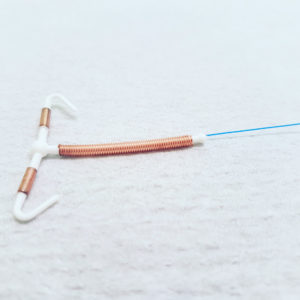Doctors Need to Do More to Address IUD Insertion Pain, New CDC Guidelines Say
Federal health officials seek to address long-standing complaints from women over the lack of pain management when being implanted with an IUD.

Federal regulators have issued new guidelines for IUD implantation procedures, following public outcry about the need for better pain management options.
The U.S. Centers for Disease Control and Prevention (CDC) issued Selected Practice Recommendations for Contraceptive Use on August 8, seeking to address common issues faced by patients when beginning different contraceptive methods. The new guidelines are now more patient-centered and focus on addressing issues with IUD insertion pain experienced by many women receiving the long-acting form of birth control.
Intrauterine devices (IUDs) are small t-shaped pieces of plastic inserted into the uterus to help prevent pregnancies. Brands like Mirena and Skyla release small amounts of hormones, while the Paragard uses copper wire instead of drugs, producing an inflammatory reaction that helps to prevent pregnancy.
IUDs must be placed by a doctor. During the visit, the doctor performs a pelvic exam and places a speculum to widen the vagina to insert the IUD through the cervix and into the uterus. Most patients report experiencing some pain and cramping. However, some patients have experienced severe pain during IUD insertion, yet most doctors do not offer ways to alleviate that pain.
For decades women have complained of pain during IUD insertion. However, there has recently been a great deal of social media attention focused on patient reports of severe pain during placement, with some women reportedly passing out or vomiting.

Learn More About
Women have reported problems where Paragard IUD fractured or broken during removal, resulting in serious injury.
Learn More SEE IF YOU QUALIFY FOR COMPENSATIONThe CDC’s new guidelines replace a series of recommendations last issued in 2016, calling for doctors to counsel patients about pain and how to manage it, indicating lidocaine, a local anesthetic, may be useful in doing so. The guidelines also urge doctors to attempt to personalize IUD placement and consider pain management plans for each patient.
Some of the other updates include recommendations for removing IUDs when placement fails, and considering alternatives for treating bleeding irregularities after an IUD is placed, including hormonal treatment, tranexamic acid, and non-steroidal anti-inflammatory drugs (NSAIDs).
The guidelines came from a CDC review of current research and a meeting with national experts in Atlanta, Georgia in January 2023.
Paragard IUD Lawsuits
In recent years, the Paragard IUD has been the subject of a number of product liability lawsuits over problems experienced by some when when the IUD fractured or broke during attempted removal.
Although the device is intended to be easily removable during an outpatient procedure when women no longer want the birth control, there have been numerous reports of the Paragard IUD breaking during removal, with fragments becoming embedded in the uterus or cervix. Such incidents often lead to severe internal injuries, necessitating emergency surgical intervention to remove the embedded pieces and mitigate further harm.
According to allegations raised in hundreds of Paragard lawsuits currently pending in the federal court system, the problems are caused by an unreasonably dangerous and defective design.






0 Comments